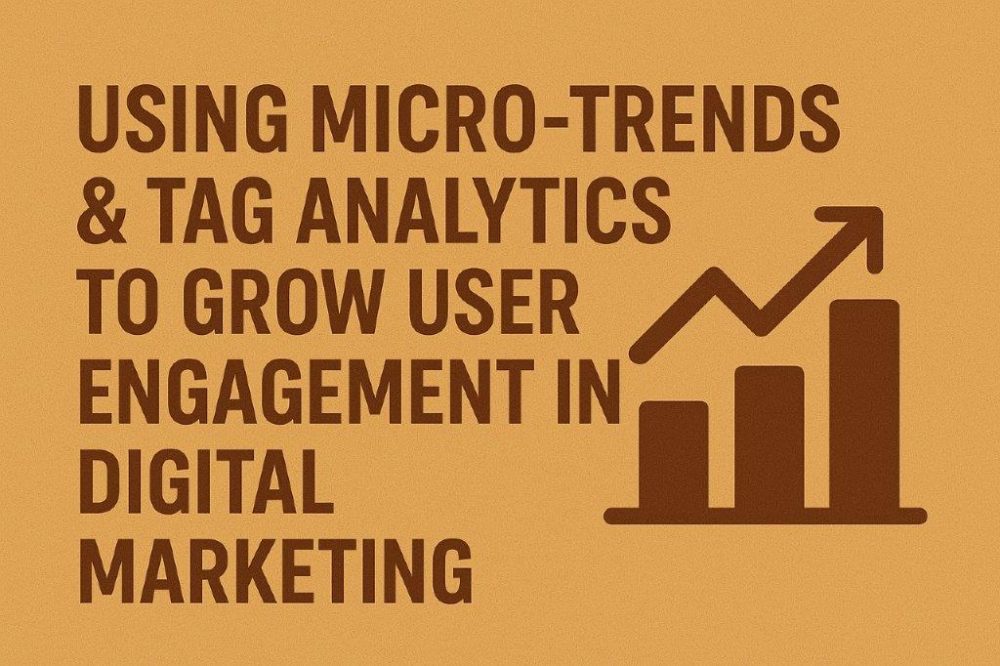In the current fast-paced world of digital transformation and digital marketing, capturing and holding a user’s attention is known to be an ultimate challenge. The key to turning passive visitors into engaged, loyal customers is mostly dependent on understanding the subtle, fleeting shifts in consumer behavior, the micro-trends, along with having the technical capability to measure as well as act on these insights by using sophisticated tag analytics. This data-driven approach is the key foundation for a hyper-personalized as well as high-engagement digital strategy.
Decoding Micro-Trends for Content Relevance
Micro-trends are brief, mainly focused bursts of interest and often localized or niche, which signal a temporary shift in user preference, search intent, or even content consumption. In contrast to broad, long-term macro-trends, micro-trends are primarily known for their speed as well as specificity. For marketers, identifying these waves of micro-trends plays an important role as they represent a moment of high, specific user intent.
For example, a sudden increase in search queries for a particular clothing color, a new slang term on social media, or a specific DIY video format are all micro-trends. Using micro-trends can help brands and creators in capturing audience attention, proving authenticity, as well as gaining competitive edge.
To leverage micro-trends:
- Real-Time Listening: Use social listening tools as well as platform analytics for examining rapid increase in keyword volume, hashtag usage, and content shares.
- Agile Content Creation: Produce content that directly align with the micro-trend, which may include quick blog post, a short format video, or an interactive poll. The timing must be sudden to take advantage of the trend’s short life cycle.
- Niche Personalization: Micro-trends fundamentally segment audience. Moreover, use a quick trend with highly relevant content segments, ensuring that users interested in that specific topic.
By aligning content with a current micro-trend, helps in dramatically increase its relevance, which is the driving factor in boosting user engagement by likes, shares, comments, time on page, and others.
The Power of Tag Analytics in Measuring Engagement
The micro-trends helps to determine what to publish, but tag analytics is the engine which provides data on user engagement and interaction. Tagging also involves embedding small pieces of code such as pixels or tracking scripts into digital assets, which helps to determine basic page views as well as capture deep behavioral data.
In the context of user engagement, tag analytics helps track small, non-monetary actions that indicate engagement as well as progress down the funnel.
The Synergy: Micro-Trends Meet Tag Analytics
The most important as well as effective digital marketing strategy blends the precision of tag analytics with the timeliness of micro-trends.
- Identify a Micro-Trend: For instance, a brand witnesses an abrupt, or sudden increase in queries for “sustainable zero-waste living tips.”
- Create Relevant Content and Deploying of Tag Analytics:: The marketing team will immediately announces and publishes a short-form video guide with a fouc on “5 Zero-Waste Swaps.” Further custom events need to be set up to evaluate the video play progress and clicks on product links.
- Analyze as well as Optimize:
- If link clicks are low as well as scroll depths are high, then the content is engaging, but the call to actions needs to be improved.
- If video watch time decreases to below 50% mark, then video might needs a more powerful and engaging shorter format.
- If link clicks are low as well as scroll depths are high, then the content is engaging, but the call to actions needs to be improved.
- Re-Target and Personalize: Finally viewers segment need to be created based on users who watched 75% of the video but didn’t click the link. Futher, targeting viewers with a follow-up email offering a discount on the featured zero-waste products will be a proactive approach.
Conclusion
Relying on broad trends and simple engagement metrics is no longer enough. By using micro-trends for increasing relevance into content and leveraging tag analytics for measuring the subtle shifts in user interaction, digital marketers can unlock exceptional levels of personalization, increase user engagement, as well as drive stronger business outcomes. This data-to-content feedback loop will be the new standard for success.
